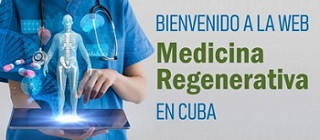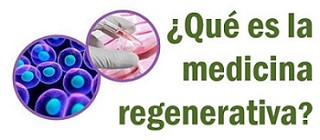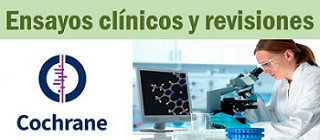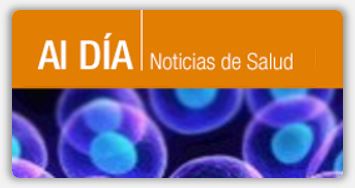Garry P Duffy* and Caroline C Herron
Murine models of hind-limb ischemia are frequently used to assess interventions aimed at improving therapeutic angiogenesis in critical limb ischemia. Much of the current focus of angiogenesis lies with mesenchymal stem cells (MSCs). Important considerations when using these models include the strain of mouse, because some strains recover from ischemia more rapidly than others, and the MSC source. MSCs derived from certain strains generate increased levels of growth factors such as vascular endothelial growth factor. This may significantly affect the limbs ability to generate collateral vessels
Stem Cell Research & Therapy 2013, 4:131 doi:10.1186/scrt342
Resumen.
Recientemente, se ha demostrado que una combinación específica de factores de crecimiento mejora la supervivencia, la adhesión y el potencial angiogénico de las células mononucleares (CMN) . En este estudio, hemos tratado de investigar los cambios en el potencial angiogénico de las CMN después de una preparación de corta duración con una combinación específica de factores de crecimiento. Ver más…
Scientists have demonstrated a new way to reprogram adult tissue to become cells as versatile as embryonic stem cells — without the addition of extra genes that could increase the risk of dangerous mutations or cancer. Ver artículo
Abstract
Drug trials in neonates and children with pulmonary hypertensive vascular disease pose unique but not insurmountable challenges. Childhood is defined by growth and development. Both may influence disease and outcomes of drug trials. The developing pulmonary vascular bed and airways may be subjected to maldevelopment, maladaptation, growth arrest, or dysregulation that influence the disease phenotype. Drug therapy is influenced by developmental changes in renal and hepatic blood flow, as well as in metabolic systems such as cytochrome P450. Drugs may affect children differently from adults, with different clearance, therapeutic levels and toxicities. Toxicity may not be manifested until the child reaches physical, endocrine and neurodevelopmental maturity. Adverse effects may be revealed in the next generation, should the development of ova or spermatozoa be affected. Ver más…
Abstract
Owing to the several advantages that they have over other cells, mesenchymal stem cells are among the most promising tools in stem cell therapy after ischemic stroke. Mesenchymal stem cells can be obtained from various sources. Therefore, a wide range of careful comparative studies of these cells is required, from the preclinical stage (in vitro and in vivo) to the clinical stage, in order to develop the best therapy with the most appropriate cell type. An in vivo study in this issue of Stem Cell Research & Therapy compares the therapeutic potential of two cell types, obtained from bone marrow and adipose tissue, in a rodent stroke model. This commentary discusses the significance of comparative studies of mesenchymal stem cells, including the related article in translational research.
Geoffrey P Lomax and Kelly A Shepard
Abstract
Efforts have emerged internationally to recruit donors with specific disease indications and to derive induced pluripotent cell lines. These disease-specific induced pluripotent stem cell lines have the potential to accelerate translational goals such as drug discovery and testing. One consideration for donor recruitment and informed consent is the possibility that research will result in findings that are clinically relevant to the cell donor. Management protocols for such findings should be developed a priori and disclosed during the informed consent process. The California Institute for Regenerative Medicine has developed recommendations for informing donors in sponsored research. These recommendations include obtaining consent to recontact tissue donors for a range of scientific, medical and ethical considerations. This article reviews the basis for these recommendations and suggests conditions that may be appropriate when reporting findings to donors.
Abstract
The objective of this article is to assess the safety of intraspinal infusion of autologous bone marrow mononuclear cells (BMNCs) and, ultimately, to look for histopathological signs of cellular neurotrophism in amyotrophic lateral sclerosis (ALS) patients. We conducted an open single arm phase I trial. After 6 months observation, autologous BMNCs were infused into the posterior spinal cord funiculus. Safety was the primary endpoint and was defined as the absence of serious transplant-related adverse events. In addition, forced vital capacity (FVC), ALS-functional rating scale (ALS-FRS), Medical Research Council scale for assessment of muscle power (MRC), and Norris scales were assessed 6 and 3 months prior to the transplant and quarterly afterward for 1 year. Ver más…
How to Cite this ArticleJournal of Blood TransfusionVolume 2012 (2012), Article ID 365182, 7 pagesdoi:10.1155/2012/365182
Review Article
Potential Application of Cord Blood-Derived Stromal Cells in Cellular Therapy and Regenerative Medicine
Simone Maria Kluth, Teja Falk Radke, and Gesine Kogler
Institute for Transplantation Diagnostics and Cell Therapeutics, Heinrich Heine University Medical Center, 40225 Duesseldorf, Germany Ver más…





